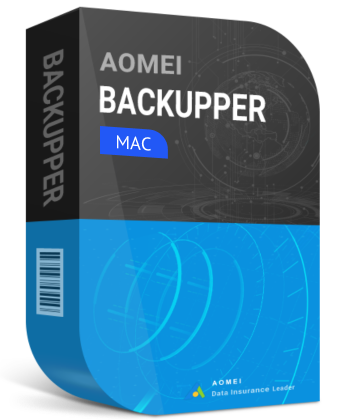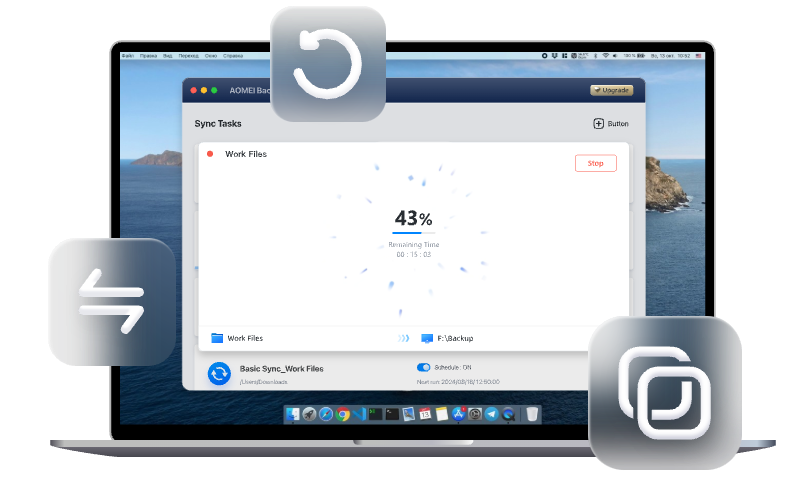The Ultimate Guide to Mac File Synchronizer
In this comprehensive guide, we explore the world of Mac file synchronizers. You'll learn about the importance of file synchronization, detailed steps to use top sync tools, and solutions to common problems. The article also introduces AOMEI Backupper for robust data management.
Introduction
Efficient file synchronization is the cornerstone of a streamlined workflow, especially for Mac users who demand seamless operation across their devices. The primary keyword, "Mac file synchronizer," plays a crucial role in this ecosystem, ensuring that your data remains consistent and accessible. In this article, we'll delve into the best practices for using Mac file synchronizers, explore top tools, and address common queries.
Why File Synchronization is Essential
File synchronization is crucial for several reasons:
⚡Data Backup and Protection: Synchronization ensures that your files are backed up across multiple devices or locations, reducing the risk of data loss due to hardware failure or accidents.
⚡Access and Availability: It allows you to access the latest version of your files from any synced device, enhancing productivity and flexibility.
⚡Collaboration: Facilitates seamless collaboration by keeping all team members updated with the latest changes and versions of files.
⚡Version Control: Helps in maintaining version control, ensuring that everyone is working on the most recent version of documents or projects.
⚡Efficiency: Automates the process of updating files, saving time compared to manually transferring or copying files between devices.
Available Mac File Synchronizers
Mac iCloud
iCloud Drive is Apple's cloud storage service designed for storing files and accessing them across all Apple devices. It offers several advantages, including seamless integration within the Apple ecosystem, automatic backups, and easy file sharing. On the downside, iCloud Drive provides only 5GB of free storage, which can quickly be exhausted, and it requires Apple devices for optimal functionality.
Step 1: Open System Preferences, then go to Apple ID and select iCloud. Make sure the box next to iCloud Drive is checked.
Step 2: Launch Finder and click on iCloud Drive. Drag and drop the files or folders you wish to sync into this folder.
Step 3: Your files and folders in iCloud Drive can be accessed from any device where you're signed in with your Apple ID and have iCloud Drive turned on. You can also view these files by logging into the iCloud website at iCloud.com.
AOMEI Backupper Mac
When picking Mac file sync tools, ensuring your data safety is important. AOMEI Backupper Mac offers an impeccable solution for backing up and syncing your data. With a user-friendly interface and robust features, AOMEI Backupper simplifies the process of safeguarding your data. AOMEI Backupper Mac provides a reliable and efficient way to sync, ensuring your data is always protected.

- Sync Your Entire Mac: Easily sync any file on your Mac to ensure complete protection.
- Varied Sync Choices: Choose from Basic Sync, Mirror Sync, or Two-Way Sync for flexible Mac synchronization.
- Multiple Storage Destinations: Sync to local drives, cloud storage, NAS devices, external hard drives, USB flash drives, SD cards, and more.
- Quick & Secure: Enjoy rapid file syncing with advanced technology, ensuring your data is encrypted and safe throughout the process.
Step 1: Download and install the AOMEI Backupper Mac software on your Mac. Click on New Task to initiate the process.
Step 2: Select the synchronization type that fits your needs. For syncing between two folders, Mirror Sync or Two-Way Sync are recommended options.
Basic Sync: This option copies files from one location to another without removing the originals from the source.
Mirror Sync: Creates an identical copy of the source files at the destination, deleting any files at the destination that no longer exist in the source.
Two-Way Sync: Ensures that files in both the source and destination are updated, mirroring changes in either location.
Step 3: Specify the sync source and destination for the sync.
Step 4: Customize sync schedules and options to fit your preferences.
You can choose how often to sync your files: once, hourly, daily, weekly, or monthly. Additionally, you can set the start time and decide if the system should hibernate or shut down after syncing.
In the Options menu, you can customize settings like File Inclusion, File Exclusion, and Folder Exclusion.
Step 5: After configuring all settings, click the Sync button and let the process complete.
Dropbox
Dropbox is a widely used cloud storage platform that lets you store, sync, and share files and folders across various devices, including Windows, macOS, Linux computers, and iOS and Android mobile devices. Here’s how to sync files on your Mac using Dropbox.
Step 1: Go to the Dropbox website and download the Mac application.
Step 2: Launch the installer and follow the on-screen instructions to complete the installation. Sign in with your existing account or create a new one.
Step 3: Dropbox will create a dedicated Dropbox folder in your home directory. Simply drag and drop files into this folder to begin syncing.
✍ Note: Dropbox provides 2GB of free storage. Consider upgrading if you need additional space.
Frequently Asked Questions
Q 1: Is file synchronization secure?
A 1: Most file synchronizers use encryption to protect your data during transfer and storage. Always choose reputable services with strong security measures.
Q 2: Can I sync large files using these tools?
A 2: Yes, most synchronization tools support large files. However, be mindful of storage limits and upload speeds, which can affect sync performance.
Q 3: What is the difference between file backup and file synchronization?
A 3: File backup creates copies of files for recovery purposes, while file synchronization ensures that the same files are available across multiple devices. AOMEI Backupper combines both functionalities for comprehensive data management.
Practical Tips for Efficient File Synchronization
- Regular Backups: Even with synchronization, regular backups are crucial to prevent data loss.
- Organize Files: Maintain a consistent file organization system to simplify syncing and retrieval.
- Monitor Storage: Keep an eye on your storage limits to avoid sync disruptions.
Conclusion
Mastering the use of Mac file synchronizers can significantly enhance your productivity and data management capabilities. By following the solutions and tips provided in this guide, you can ensure that your files are always up-to-date and easily accessible across all your devices. Incorporating tools like AOMEI Backupper further strengthens your file synchronization strategy, offering robust features for data protection and management. Embrace these practices to streamline your workflow and enjoy a seamless Mac experience.

